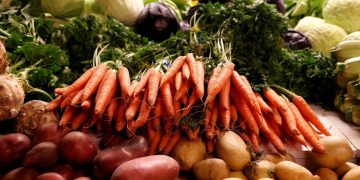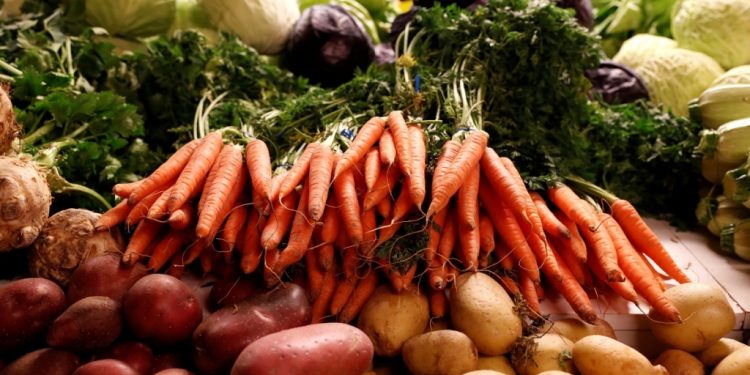A repeat of the sharp increase in the cost of the “borscht set” that occurred last winter, most likely, will not be due to good vegetable collections. But, despite this, seasonal fluctuations in their prices will remain. The specialists of the company “August”, a leading Russian manufacturer of plant protection products, told about the main features of crop conservation and pest control, diseases and weeds on vegetable crops.
“Vegetable crops of large areas (onions, tomatoes, carrots, table beets, that is, the so-called borscht set) are very demanding to protect. The need for chemical and biological means for these purposes is due, in particular, to the fact that manual labor is becoming more expensive today, at the same time access to a sufficient amount of labor is decreasing and it becomes almost impossible to find the right number of personnel even for a lot of money,” notes Dmitry Belov, Head of the Product Development Department of JSC Firm August.
Vegetables are exposed to various kinds of pathogens. These are fungal, viral, bacterial diseases, and many special pests that are controlled by a large number of broad-spectrum drugs on other crops. Whereas for vegetable crops it is necessary to use specific preparations, such as, for example, to control the caterpillars of lepidoptera pests. Insect growth regulators, ovicidal and larvicidal drugs, anti-mite agents, etc. may be needed.
Protection is also needed before being stored. Different vegetables have significantly different terms and requirements for storage conditions, which is generally the Achilles heel of vegetable growing: storage facilities with a controlled climate are needed to reduce losses and prevent the development of pathogens. At the same time, products should be sent to warehouses in a healthy form and there is no way to do without timely protection.
Another factor determining the need for the use of SPR on vegetable crops is the high cost of seeds. So, the price of a kilogram package of high-quality onion seeds can reach several million rubles. However, diseases such as stemphiliosis or peronosporosis, fusarium rot of the bottom, cervical rot, as well as pests (for example, thrips) can cause the death of crops on all areas of the farm within a few days or lead to the fact that after the loss of marketable appearance, it will be impossible to sell such products. The production of products on vegetable farms, as a rule, is not diversified, as is the case with the production of field crops, when, for example, the loss of the corn crop is compensated by good results of sunflower harvesting. For example, in Stavropol, Kuban, Volgograd, Saratov, Astrakhan regions, farmers who specialize exclusively in onions work, and if he dies, then the economy of the economy also dies, and the inability to repay debts leads to bankruptcy. Therefore, at the slightest probability of pathogen development, a tank mixture of drugs effective against the pathogen complex is treated.
According to the company’s experts, cabbage protection schemes echo the protection schemes of such a mass culture as rapeseed: they belong to the same cruciferous family. Soil herbicides based on, in particular, C-metolachlor are used here; clopyralide, picloram, ethametsulfuron-methyl are used against weeds during vegetation. With diseases, the specificity is about the same: with the help of drugs that are also registered for use on rapeseed and other crops, cabbage is protected from alternariosis, white and gray rot, mucosal bacteriosis. For carrots in Russia, there is an effective set of soil herbicides and herbicides for vegetation against dicotyledonous and cereal weeds; there are a sufficient number of fungicidal preparations on the market against septoria, alternariosis, false powdery mildew. The scheme of protection of table beets is close to the scheme of protection of sugar, while the protection of tomatoes is in many ways similar to the protection of potatoes, except that tomatoes additionally need to be protected from a group of rot – gray and sclerotiniosis, anthracnose pathogens. In the south of Russia, tomatoes are also protected from spider mites and cotton scoops. As for onions, a very serious protection system based on drugs from both multinational and Russian companies is available for them in our country.
“Weed control is the most time–consuming,” Dmitry Belov emphasizes. – Despite the fact that even now manual labor is used in places for pruning, herbicidal treatment is carried out on carrots, beets, onions, tomatoes, and cabbage. The creation of machines that could replace it is still at the level of startups, in which mechanical cultivators are used using machine vision technologies and neural networks. There is a particularly high need for recognizing and removing weeds in this way on green crops, including salad types of cabbage. In general, for the global agricultural market, these technologies are still not readily available, agricultural enterprises use mainly herbicidal protection, since, for example, it is almost impossible to perform manual weeding on farms with large areas of arable land. In most cases, the use of herbicides is even safer than using a poorly motivated workforce.”
The problem of the market of SPD for vegetable crops is that many drugs that could protect them in general are not registered for use on them in Russia and they cannot be used (although products with similar active components are registered and successfully used to protect vegetables in other states). But the procedure for registration of the drug in our country is such that the regulations for use are developed for each culture and each harmful object separately. At the same time, the payback of registration of a drug used on 40 million hectares of grain will be several times faster than a drug used on 25 thousand hectares of carrots, therefore, preparations for mass crops were registered in total more often and more. Currently, the domestic market for the protection of vegetable crops is 60-70% occupied by products of multinational companies. Often they supply both raw materials and seeds at once, so that their products have an even shorter path to the consumer than those of Russian suppliers. Foreign giants were the first to enter the nascent domestic market, there was almost no competition between them – 2-3 companies divided buyers on it, but the market developed along with the intensification of agricultural production, the development of logistics and storage systems for vegetable products. Today, many Russian manufacturers are successfully working on it.
This direction is also being developed by the August company, and if previously it was necessary to limit the herbicide line, today high-quality insecticides and fungicides for vegetable crops are available in the assortment, including unique ones that can satisfy both basic and niche needs of vegetable growers. The gradual increase in the supply of raw materials for vegetables from domestic companies has been in the last ten years.
“In 2022, mostly favorable conditions have developed for vegetable–growing agricultural firms – both from the point of view of the weather, and from the point of view of the absence of significant pests and pathogens. However, the “borscht set” as a whole will continue to gradually become more expensive, – Dmitry Belov comments. – Vegetable seeds are still a scarce position in the field of crop production, the price for them is growing, and even without reference to the exchange rate. Some Russian companies are actively developing this area, but in order to achieve a visible result, such work needs to be scaled tenfold.”
The expert states that there are no conditions for reducing prices for fertilizers, nor for the NWR, nor for maintenance and repair of agricultural machinery. At the same time, despite the large volume of domestic harvest, it will not be possible to avoid the March and February deliveries of vegetables from abroad in 2023, since fundamental changes in the Russian storage infrastructure that would allow saving a significant amount of products for a long time have not yet occurred. At the same time, the sharp fluctuations in the cost of the “borscht set” that were observed during the current year, in the absence of force majeure events, the consumer will most likely not see in the new year.
A source: https://kvedomosti.ru/

































